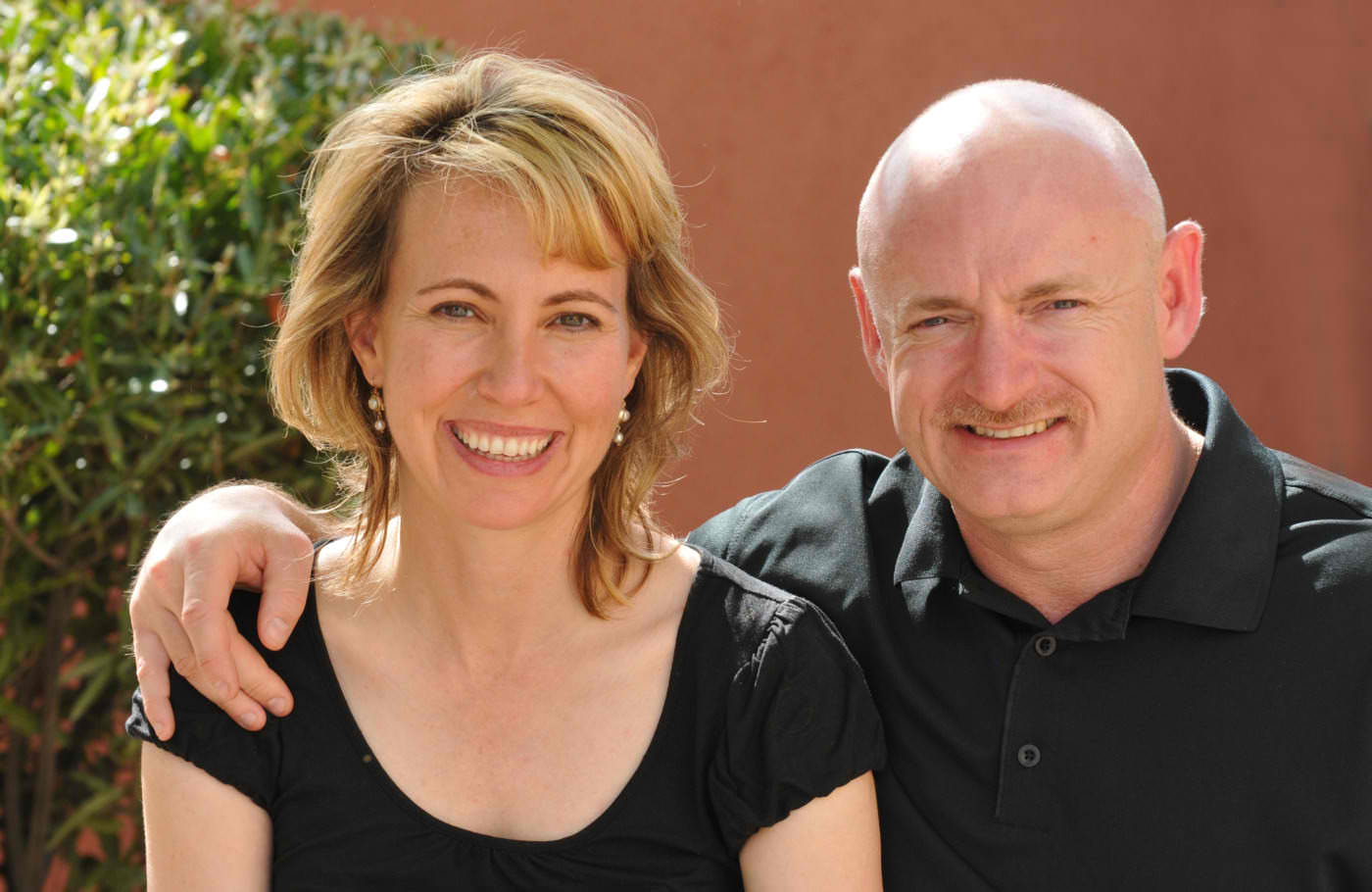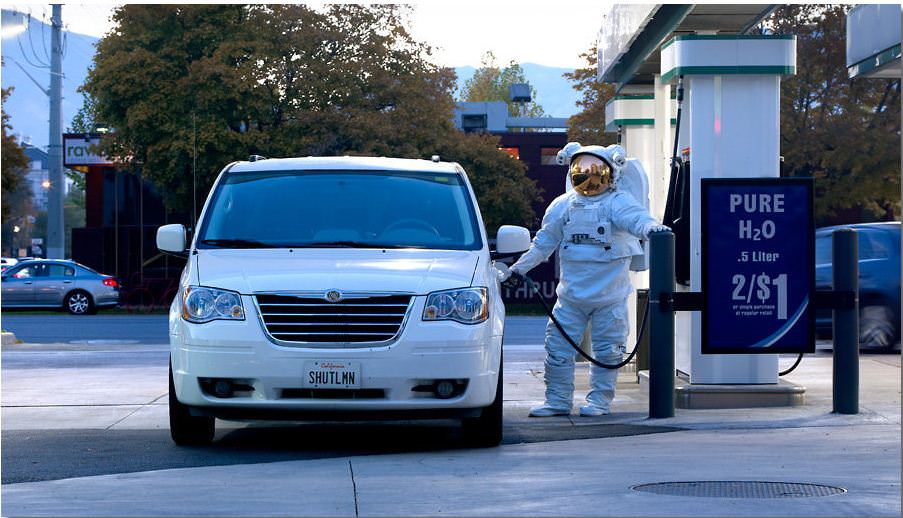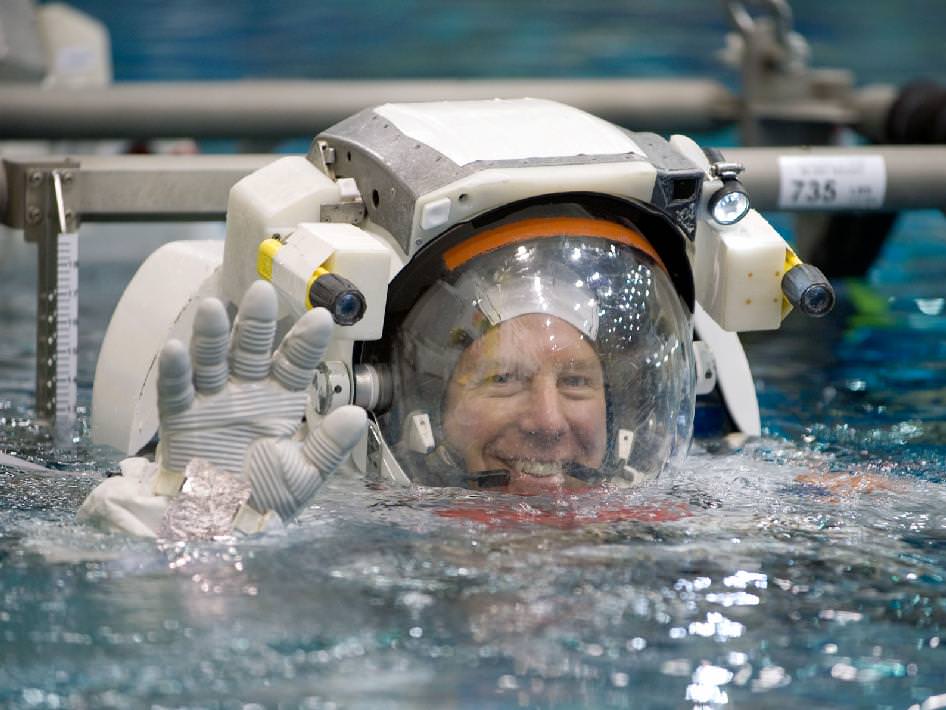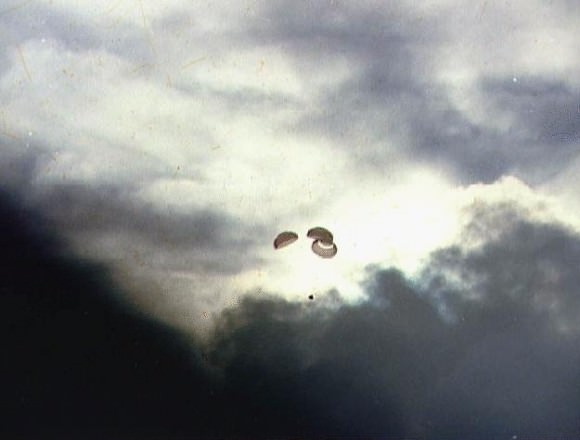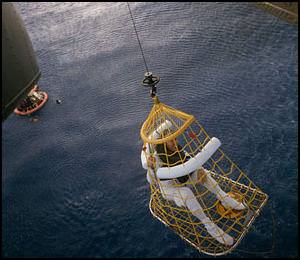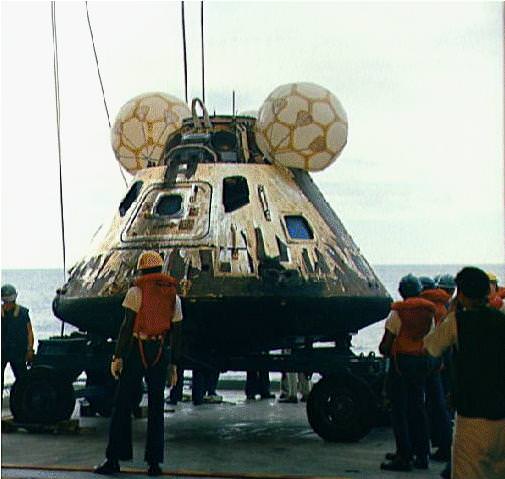We’ve all seen the specially made NASA van that takes the astronauts to the launchpad, but normally we don’t get to see what it is like on the inside. NASA just put out this video, letting us Earth-bound folks get a peek inside the shiny, silvery astronaut vehicle. And just take a look who got to drive it…
NASA is Looking for a Few Good Astronauts — Like You?
[/caption]
NASA is looking for applicants for its next class of astronaut candidates who will support long-duration missions to the International Space Station and future deep space exploration activities.
“We hope to have a lot of interest and applications so we can have a great class in 2013,” Duane Ross of the NASA Astronaut Selection Office told Universe Today. “This is a pretty fun job.”
So, do you have the right stuff to be an astronaut in today’s changing space environment?
NASA says that a bachelor’s degree in engineering, science or math and three years of relevant professional experience are required in order to be considered. Typically, successful applicants have significant qualifications in engineering or science, or extensive experience flying high-performance jet-aircraft.
“For scientists, engineers and other professionals who have always dreamed of experiencing spaceflight, this is an exciting time to join the astronaut corps,” said Janet Kavandi, director of flight crew operations at the Johnson Space Center in Houston. “This next class will support missions to the station and will arrive via transportation systems now in development. They also will have the opportunity to participate in NASA’s continuing exploration programs that will include missions beyond low Earth orbit.”
Ross said that this upcoming class will be rather small. “The last class of 2009 we had nine NASA folks and they were joined by five international partner astronauts. I think our goal would be something in the eight to twelve range. The actual number doesn’t get decided until we know better what our requirements are and what our loses have been.”
So, how will these astronauts be trained, since the space shuttle is no longer flying and future astronauts may be flying on spacecraft that haven’t been built yet?
“For the last class we picked we actually picked them to be long duration crew members for space station. They didn’t train for the space shuttle and that is exactly what we are going to do with this class,” Ross said. “The new class will train for learning the International Space Station systems, the Russian language, spacewalk and robotics training, and several other disciplines and other things that will come online such as the MultiPurpose Crew Vehicle. For the things that mature downstream, there will be training for those when the time is right but right now we are going to concentrate on the space station.”
After applicant interviews and evaluations, NASA expects to announce the final selections in 2013, and training to begin that August.
NASA will begin accepting applications in November 2011. Additional information about the Astronaut Candidate Program is available by calling the Astronaut Selection Office at 281-483-5907.
For more information, visit:
http://astronauts.nasa.gov/
Astronaut Mark Kelly Retires from NASA
[/caption]
Astronaut Mark Kelly, commander of the recent STS-134 shuttle mission and husband of Rep. Gabrielle Giffords, announced today via Facebook that he is retiring from NASA and the US Navy to spend time with his wife. Other sources say the two will write a memoir together.
“This was not an easy decision,” he wrote on his Facebook page. “Public service has been more than a job for me and my family. My parents are retired police officers. And my wife Gabrielle proudly serves in the U.S. House of Representatives.”
Kelly said that his decision to retire was not at all about questioning the future of NASA, but he feels a need to spend time with his wife and family.
“As life takes unexpected turns we frequently come to a crossroads,” Kelly wrote. “I am at this point today. Gabrielle is working hard every day on her mission of recovery. I want to be by her side. Stepping aside from my work in the Navy and at NASA will allow me to be with her and with my two daughters. I love them all very much and there is no doubt that we will move forward together. After some time off, I will look at new opportunities and am hopeful that one day I will again serve our country.”
Despite persistent rumors on the internet, Kelly has said he has no intentions of seeking public office and is “absolutely” convinced his wife will return to political life.
Rep. Giffords was shot in the head in January, 2011 in Tucson at an event she was hosting for residents of her Congressional district. Six people died and 13 were injured. She was recently released from a rehabilitation hospital in Houston.
Kelly’s retirement from NASA and the Navy, where he has served for 25 years, is effective Oct. 1. He has flown in space four times. According to ABC news, he and his wife said they have a deal with Scribner’s publishers for a joint memoir.
Sources: Facebook, ABC, Arizona Daily Star
Everyday Astronauts
[/caption]
What do astronauts do when they aren’t in space? Commercial photographer Hunter Freeman’s images all seem to have a bit of whimsy included, and his series of suited astronauts doing everyday things us regular humans may find humdrum will bring a smile to your face, guaranteed. Make sure you look for the small, very relevant details! Check out the entire series at this link, and learn more about his work at his website.
How does NASA Handle Delivering Tragic News?
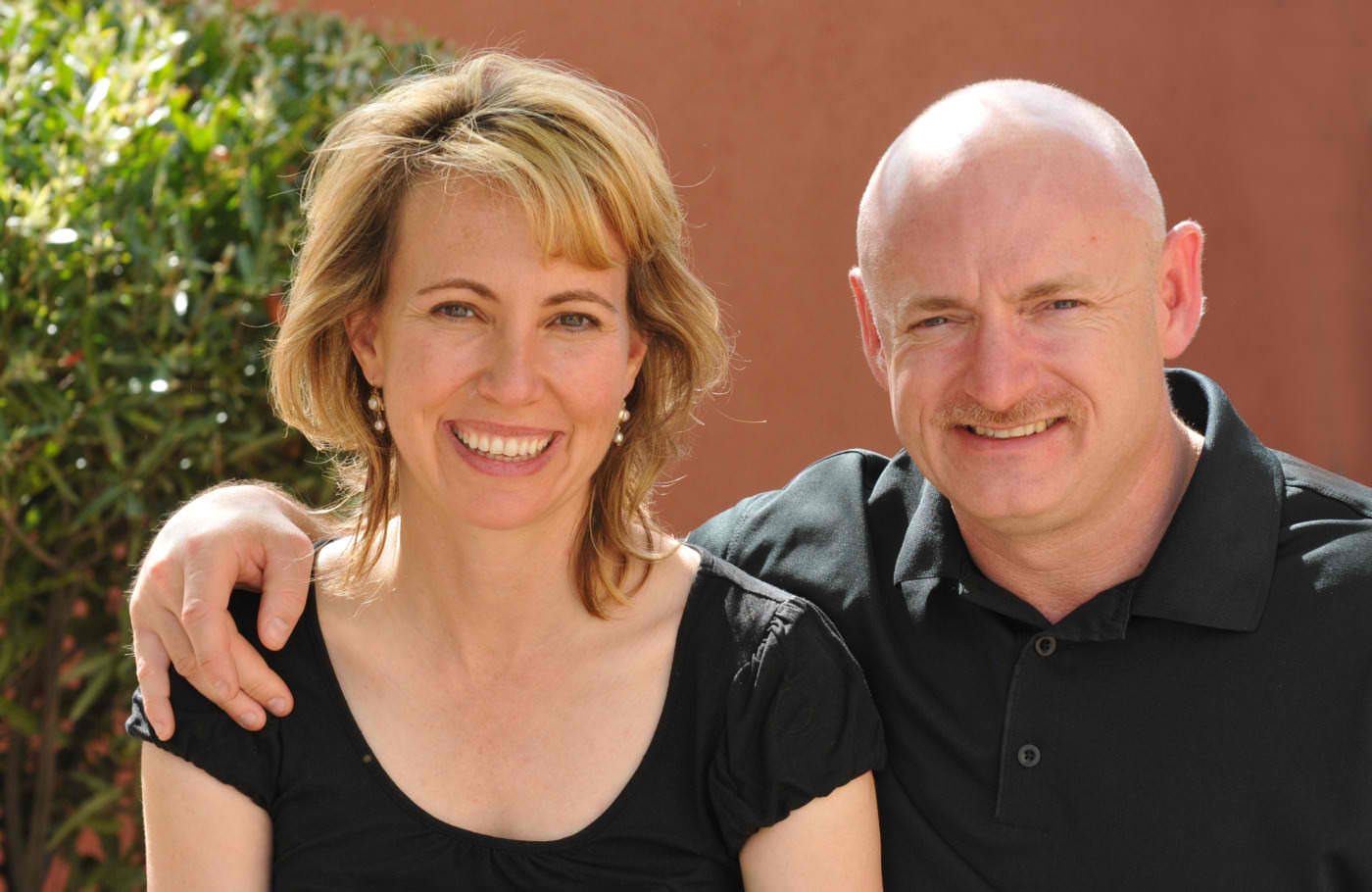
[/caption]
Over the past decade, events have transpired on the ground that have both indirectly and directly impacted crews on orbit. With astronauts spending as long as six months in space on the International Space Station, some have had to deal with tragedies — both intimately personal and completely national — during a mission. NASA, for its part, has done everything it can do to prepare crews for life in space, and dealing with tragedies is factored into every flight.
When terrorists conducted the worst attack on American soil in U.S. history on September 11, 2001, there was a single U.S. astronaut orbiting high above on the ISS, left helpless to do anything but watch and photograph as his nation came under attack. Frank Culbertson, then commander of the orbiting outpost along with two Russian cosmonauts, spoke afterward of his sense of isolation as the country dealt with this tragedy.
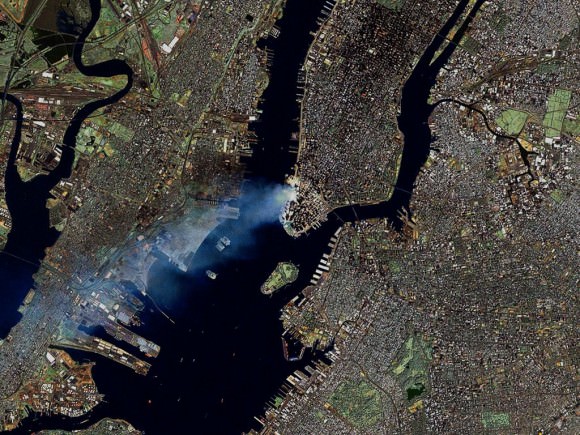
A disaster a little closer to home struck on Feb. 1, 2003 – the space shuttle Columbia was lost on orbit with her crew of seven. Astronauts Donald Pettit and Kenneth Bowersox were on orbit on the ISS when Columbia broke apart in Earth’s atmosphere, returning from a non-space station mission. While the two crews were in space at the same time, astronauts Petit on the ISS and Willie McCool aboard Columbia played a friendly game of chess – separated by the void of space. Sadly, the game would never be finished. McCool and the rest of Columbia’s STS-107 lost their lives when the orbiter disintegrated in the skies above Texas. For Petit and Bowersox this cut them off from traditional forms of grieving as well as a way home.
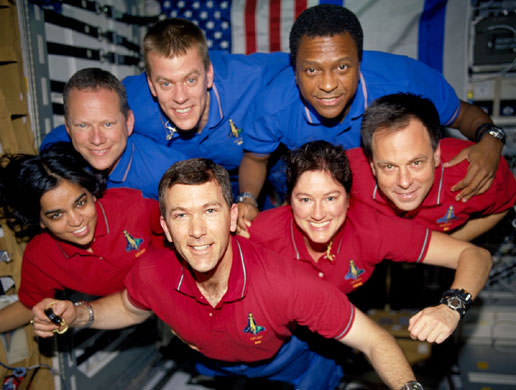
With the orbiter fleet grounded, how would they change out crews? The 16 nations involved in the ISS project worked to balance things out until the shuttles were back in action. Post-Columbia, crew rotations among numerous other things would be changed. NASA would survive, but tragedies would still strike the NASA family.
When astronaut Dan Tani was stationed aboard the ISS in 2007 he received the terrible news that his mother was killed in an automobile accident. A NASA flight surgeon along with Tani’s wife contacted the astronaut while he was serving aboard the ISS.
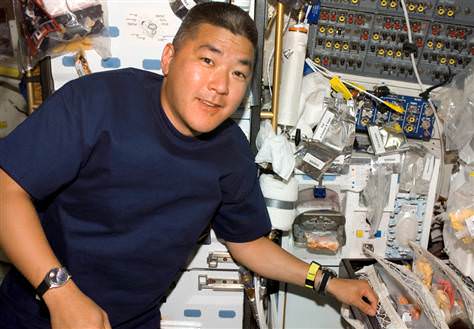
With the recent tragedy in Tucson, Arizona, NASA once again had to focus on emergency contingencies. This time a commander for an upcoming shuttle mission, Mark Kelly, had to be notified that his wife, Rep. Gabrielle Giffords, had been seriously injured in a mass shooting while meeting with her constituents at an event called “Congress on your Corner.” NASA had to contact both Mark Kelly and his brother Scott, who was on-orbit aboard the ISS. NASA also had to deal with the potential that Mark might not be able to launch with his crewmates on Endeavour’s final mission – STS-134. As such, a backup commander was announced, four-time shuttle veteran Rick Sturckow.
“NASA’s goal is mission success and crew safety. Although NASA does not train crewmembers as backups for its shuttle crews or ISS crews, it has enough trained crewmembers that substitutions late in the training flow for medical or personal emergencies can succeed,” said Tom Jones Ph.D a four-time shuttle veteran and author of Sky Walking: An Astronaut’s Memoir. “NASA has replaced at least three crewmembers within a few months to launch since the Apollo era. They also moved an ISS crewmember in training to an earlier crew to replace a crewmember dealing with medical problems. Once in space, NASA will notify astronauts of family problems back on the ground if they have asked for such notification in discussions before launch.”
NASA works to ensure the safety and privacy of its astronauts during times like this. This point was emphasized during a recent press conference held to update the media about repairs conducted to the shuttle, Discovery. William Gerstenmaier; administrator for Space Operations stated emphatically from the outset – that this was not the appropriate time to discuss these issues. One wayward reporter tried anyway, taking the question at a different angle and to another member of the interview panel – John Shannon. Shannon made sure that the reporter understood and that NASA stood as one – behind Mark Kelly and his family.
There is no way that NASA can predict every single possible scenario – but the agency does the best it can.
“Crew members are informed as soon as possible of any family emergencies or other urgent news and issues. In advance of their mission, crew members meet with astronaut office management to discuss individual preferences regarding notification of such emergencies,” said Kylie Clem a public affairs officer with NASA. “NASA provides psychological support for all astronauts, including those in space. A NASA Flight Surgeon, psychological services and family support services are all available for Scott and Mark’s families. The astronaut office is a close knit organization.”
Not all the news NASA has relayed to its astronauts has been tragic. Astronaut Mike Fincke welcomed his daughter Tarali Paulina into the world from orbit in 2004 and astronaut Randy Bresnik did the same for his daughter, Abigail Mae Bresnik, while part of the STS-129 mission in 2009. In all cases, NASA works to ensure that, regardless of the situation, its astronauts will find out their most personal news – in the best way possible – given the circumstances.
STS-133 Astronaut Breaks Hip in Bicycle Accident
[/caption]
The crew of STS-133 has had to cope with the numerous technical issues and delays for their mission, related to both the Ground Umbilical Carrier Plate (GUCP) and to a larger extent the cracks that have cropped up on the shuttle’s external tank. Now they have a new issue to contend with – an injured crewmember.
Astronaut Tim Kopra was involved in a bicycle accident over the weekend and apparently broke his hip. Although NASA has not confirmed the injury, several news agencies have reported the news. More than likely, Kopra will not be able to fly with the rest of his crewmates when Discovery launches on her final mission, currently scheduled to liftoff on Feb. 24th. The accident took place on Jan. 15, leaving little over a month before the scheduled launch.
Kopra, 47, is part of a six member crew that will mark the final time that space shuttle Discovery will head to space. He was scheduled to be the primary spacewalker on the upcoming STS-133 mission, and is a U.S. Army colonel (retired). The spacewalks that NASA astronauts undertake take many months and in some cases years to prepare for.
Preliminary reports say that a backup astronaut has been chosen, but again, NASA has not confirmed the news. NASA does not routinely train backup astronauts for shuttle missions. UPDATE: NASASpaceflight.com is now reporting that astronaut Steven Bowen has been chosen as a replacement, and that the flight of STS-133 will proceed as scheduled.
UPDATE 2: NASA has confirmed Kopra’s injury and has announced that Bowen is the replacement for Kopra. “Tim is doing fine and expects a full recovery, however, he will not be able to support the launch window next month,” said Peggy Whitson, chief of the Astronaut Office at NASA’s Johnson Space Center in Houston. “If for some anticipated reason STS-133 slips significantly, it is possible that Tim could rejoin the crew.”
In a press release by NASA, Whitson added that Bowen is an ideal candidate to replace Kopra. “We have complete confidence he’ll contribute to a fully successful STS-133 mission. He has performed five prior spacewalks. That extensive experience, coupled with some adjustments to the spread of duties among the crew, will allow for all mission objectives to be accomplished as originally planned in the current launch window.”
Bowen will begin training this week with the STS-133 crew, which includes Commander Steve Lindsey, Pilot Eric Boe, and Mission Specialists Alvin Drew, Michael Barratt and Nicole Stott. Bowen also will train to perform the two planned spacewalks of the mission. He will join Alvin Drew to move a failed ammonia pump and perform other external configurations to the station.
STS-133 is scheduled to deliver the Leonardo Permanent Multipurpose Module (PMM). Contained within the PMM is the first humanoid robot to fly into space – Robonaut 2 (R2). Discovery will also transport much-needed spare parts to the orbiting laboratory.
Best of Earth from the ISS

The International Space Station has been orbiting the Earth every day for over 10 years, and the astronauts all say their favorite pastime is looking at the Earth. During the past 10 years, the crews have taken some great pictures of our planet, and these images provide a unique look at our world. These are just a few of the spectacular views of Earth from the space station.
Peggy Whitson: A Heroine of Science and Technology
[/caption]
This post is part of Ada Lovelace Day, which is a worldwide effort to get as many people as possible to blog about a heroine of science or technology. Ada was a mathematician who lived in the 1800’s who created the first computer program. Yep — you read correctly — a computer in the 1800’s. It was actually a device called an analytical engine, which was an important step in the history of computers. You can read more about Ada and Ada Lovelace Day here.
The person I chose to write about is a goddess of both science AND technology. She is a biochemist and an astronaut. She was the first science officer on board the International Space Station and later become the first female commander of the ISS. She helped get some of the initial science programs going on the on the space station, and as commander oversaw a period of one of the biggest expansions for the station, coordinating the additions of European and Japanese laboratory modules. Her name is ….
Dr. Peggy Whitson
Perhaps I have always been drawn to Whitson because she grew up in a rural, agricultural environment, as I did. But I have always found Whitson to be endearing because of her easygoing and friendly personality. But yet, she must be almost a “slave-driver” and perfectionist when it comes to her work. During her expeditions on the ISS, Whitson earned a reputation for high achievement, which prompted mission planners to assign the crew extra work every day. NASA called it “The Peggy Factor.”
“We account for the fact that Peggy is going to do things more efficiently, and that she likes to work some on her time off, and so she’ll accomplish more,” said NASA deputy station project manager Kirk Shireman.
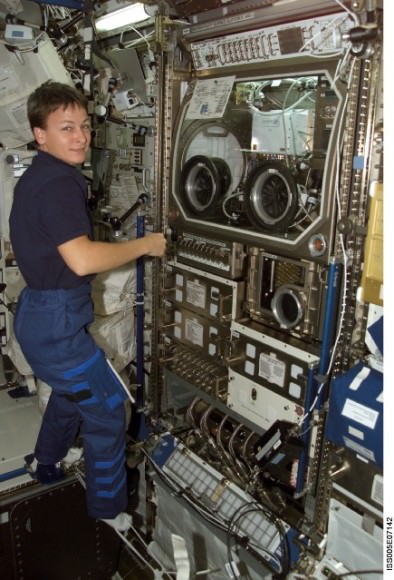
First some the details about Whitson: she graduated from Iowa Wesleyan College in 1981, and received her doctorate in biochemistry from Rice University in 1985. She worked as a Welch Postdoctoral Fellow before joining NASA in 1986.
From 1989 to 1993, Whitson was a research biochemist for NASA. During that time, she also served as an Adjunct Assistant Professor at the University of Texas and Rice University. In 1995, she became co-chair of a combined American and Russian working group, and a year later she was named an astronaut candidate.
Whitson flew her first space mission in 2002 as a flight engineer to the International Space Station as part of the Expedition 5 crew. While there, then NASA Administrator Sean O’Keefe gave her the title of first NASA Science Officer. Of course, she took some ribbing about being like “Spock,” the science officer on the original Star Trek, but she came to enjoy using the phrase “Live Long and Prosper.” During that mission she performed 21 experiments in human life science, microgravity sciences and commercial payloads.
During her second stint on the station, Expedition-16 in 2007-2008, she was named the commander.
I could go on about her accomplishments, but perhaps even better would be to let Whitson herself tell about her experiences in space. During her stays on the ISS, she wrote “letters home” to family and friends, answering questions and sharing details of her days in space.
Here’s what she had to say about doing science on the ISS:
I set up the first experiment inside the microgravity sciences glovebox this week. Tomorrow, I will do the powered checkouts of the glovebox and the next day start up the experiment. It is ssssoooo cool, getting to do science in space!!! This week we are also doing the urine collections for the renal stone investigation…and while I suspect this won’t be especially fun to collect the samples, I do think it’s one of the best experiments (I am biased, of course, since it is my experiment!).
In reading her letters, I found it interesting that she did amateur astronomy while on board the space station!:
One evening, I had dimmed the lights inside the module so that I could better watch the Earth/stars. I watched the sun set as we moved into the shadow of the Earth. I was pleasantly surprised a few min later to see a half-moon rise into view from behind the Earth. As the stars started popping into view, I was surprised again, as I saw a satellite pass by above us, looking so much like one of the other stars, but moving across the field of “constant” stars. I had never thought about the fact that I could, as one of those satellites, actually see another! And then I saw a second! Amazing.
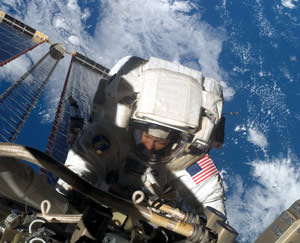
Whitson has conducted six spacewalks. Here’s how she described her first one:
My first look, as I poked my head out the hatch, was amazing! I previously compared the view of being in space to having lived in semidarkness for several years and having someone turn on the lights. Well, the view from my helmet, continuing the same analogy, would be like going outside on a sunny, clear day after having lived in semidarkness for years! If it gets better than this, I’m not sure my mind would be able to comprehend it!
And in this letter home, she waxes poetically about seeing Earth from space. She also talks about how people on Earth can watch for the ISS in the night sky, which is something that I love to do, and so it was interesting to read her perspective on that as well:
Although all the views of our planet are incredible and varied from our viewpoint up here on the Station, with the colors, textures, and lighting changing as we orbit…the most impressive view is the curve of the planet at the horizon. That curve is the special place where it is possible to see the layers of atmosphere extend beyond the surface to meet with the blackness of space beyond. Relative to the size of the Earth, it seems impossibly thin, less than a finger-width. The atmosphere carries all the shades of blue in that thin band, closest to the planet a glowing blue, like sunlit water over white sand, extending to the deepest blue-purple mixture that holds the blackness at bay.
As the night-side of the planet slips by beneath me, it carries on the fringes of darkness the colors of a sunset on the clouds below. The Station is still lit by the sun, despite the fact that we have already crossed the terminator between day and night below us. This is the timeframe when Station is most visible to folks on the ground, just before their dawn or after their dusk. A small bit of sunlight reflected off of our structure, illuminates us moving across their darkened sky. As the terminator approaches the horizon, the sun shows a blinding face that burns the atmosphere with molten reds and oranges before seemingly melting itself into the darkness, leaving a royal blue line that dissipates more slowly as the stars come out from hiding. Less than an hour passes before our path around the planet brings us back to the royal blue curve, signaling sunrise, as the process reverses itself. I am sure that after I return, I will again miss watching the curve of the Earth.
You can read more of Whitson’s letters home here.
Whitson’s ride home from space after Expedition 16 was more dramatic than expected. A malfunction made the Soyuz enter Earth’s atmosphere at a steeper angle than normal and the crew experienced “ballistic” descent at eight times the force of Earth-normal gravity. But, thankfully, everything turned out OK.
Whitson is currently chief of NASA’s astronaut office at Johnson Space Center.
Sources: Official NASA Astronaut bio, Orlando Sentinel
Spacewalking: Through an Astronaut’s Eyes

[/caption]
What is it really like to go on a spacewalk? Some astronauts have said there are no words to describe the experience, but we talked with astronaut Chris Hadfield – the same guy who gave the best description ever of going to the bathroom in space – and asked him to convey his thoughts about his EVA experiences. Hadfield has done it again, and has now given the best description ever of a spacewalk.
UT: Chris, you were part of the STS-100 space shuttle crew that flew to the ISS 2001, and you had the opportunity to do a couple of spacewalks to help in the construction of the station. I once heard you describe one of your spacewalks where you said you were holding on to the side of the space station with one hand with your face into the wind as it were, and you were looking out at the rest of the entire Universe. For all of us that wish we could experience it, what is it really like to do a spacewalk?
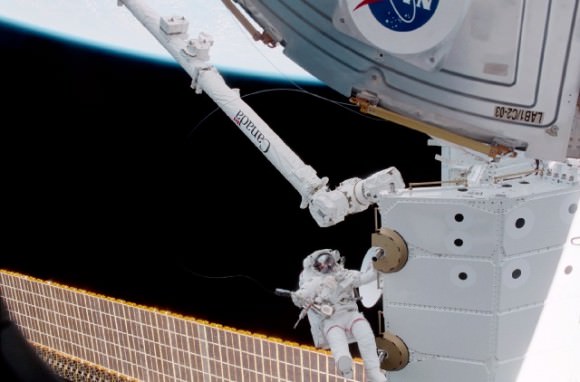
Chris Hadfield: Gosh, I’m not sure how to describe it. I was there for the birth of all three of my children. I did the first F-18 intercept of a Bear bomber off the coast of Canada. I represented Canada in a bunch of different levels, including as a fighter pilot. I was a test pilot doing all sorts of very fascinating, challenging, brand new work. I went to Mir, I went to the ISS. But nothing compares to going outside for a spacewalk. Nothing compares to being alone in the Universe; to that moment of opening the hatch and pulling yourself outside into the Universe.
Sometimes you’re driving on a mountain road, it’s slippery and you’re doing a bunch of curves and you don’t really see anything because you have a cliff falling away on one side and another cliff up on the other. But suddenly you come around a corner and you say, “Oh wow!” And there you’ve got the whole valley in front of you, or they make one of those nice pullovers where you can stop and look out, and you do, and you stop and you get out of your car and walk over to the edge and you see where you are, where all those little myopic turns have taken you.
A spacewalk is very much like that in that the opening of the hatch is probably step 750 of the day. And steps 1 through 749 were all boring and minuscule and each one was on a checklist and you had to do every one right, so you were very painstaking. But suddenly you do this one step, and suddenly you are in a place that you hadn’t conceived how beautiful this could be. How stupefying this could be. And by stupefying I mean, it stops your thought.
You’ve probably heard me say this before, but I knew I couldn’t keep notes up there and I would forget stuff so I sorta resolved to myself that I would verbalize and attempt to, as eloquently as I could, express what I was feeling and what I was seeing so that later I could listen to the recordings of it and remember, and not have missed such an amazing experience. And yet when I listen to the transcripts of what I said, most of it was just, “Wow!” It was so pathetic! But the experience was just overwhelming!
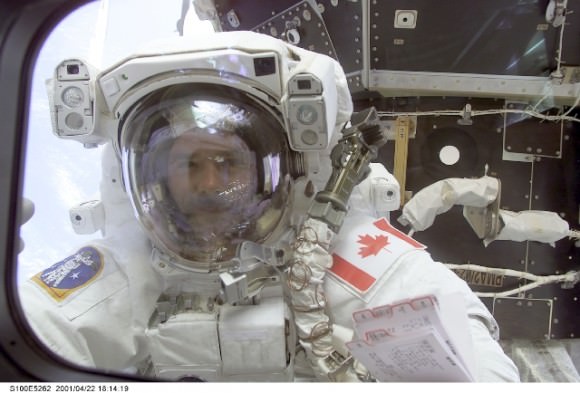
It is like coming around a corner and seeing the most magnificent sunset of your life, from one horizon to the other where it looks like the whole sky is on fire and there are all those colors, and the sun’s rays look like some great painting up over your head. You just want to open your eyes wide and try to look around at the image, and just try and soak it up. It’s like that all the time. Or maybe the most beautiful music just filling your soul. Or seeing an absolutely gorgeous person where you can’t just help but stare. It’s like that all the time.
So, it’s an extremely distracting place to work. But it also really puts yourself into perspective because this human creation is right next to you and its inherently, massively beautiful, like the prow of the Titanic or something, where you feel this great human achievement of building this great structure that takes us to a place we’ve never been. But then you notice that even though it is huge and capable, it’s just a speck between everything which is on your left and all the colors and textures of our planet that are just pouring next to you on the right. And you are this little peephole of a microcosm in between those two things, both physically and historically. And you’re very much aware of that the whole time. I’m sort of gushing, but that’s what a spacewalk feels like. It is infinitely worth all the thousands of steps it takes to get there. It’s a great, great thing – I recommend it very highly.
You can hear Chris Hadfield give his description of a spacewalk, as well as talk about NASA’s current situation and his views on the International Space Station on the March 11, 2010 edition of the 365 Days of Astronomy podcast.
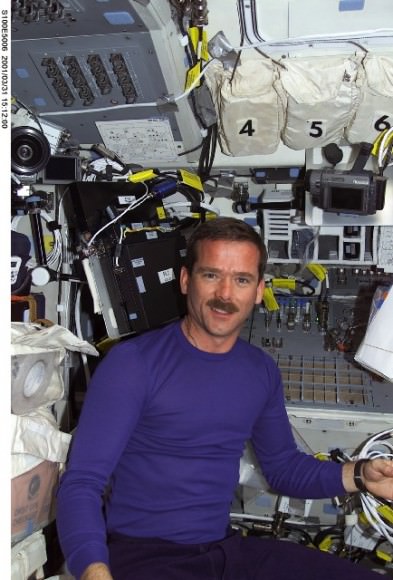
Apollo 13 Pictures
Here are some Apollo 13 pictures. You can make any of these pictures into your computer desktop background. Just click on an image to enlarge it, and then right-click and choose “Set as Desktop Background.
Here’s a photo of the Apollo 13 mission launching from Florida’s Cape Canaveral. It launched on April 11, 1970, just a few days before its accident in space, which has been turned into a popular movie.
This is an image of the Apollo 13 re-entry capsule returning to Earth, slowed by three large parachutes. Because of the accident, Apollo 13 kept its lunar lander attached to the Command Module for the entire trip around the Moon and back to Earth. They jettisoned it at the last minute just before re-entering the atmosphere.
Here’s a photo of the Apollo 13 capsule floating on the ocean after its landing. You can see command module pilot John L. Swigert Jr being lifted up by a helicopter.
And here’s a photo of Commander Jim Lovell being lifted up into the helicopter. He was the last of the three astronauts lifted up to safety after their capsule landed in the ocean.
This is an image of the Apollo 13 command module, which was normally used by the astronauts through the mission. Their command module had to be powered down to save power so they had to use the service module after the accident.
We’ve written many articles about Apollo 13 for Universe Today. Here’s an article about what really happened on Apollo 13, and here’s an article about the Apollo 13 launch.
If you’d like more information on Apollo 13, here’s a link to NASA’s Apollo 13 mission page, and here’s more information on the accident.
We’ve recorded an episode of Astronomy Cast about the NASA capsules. Listen here, Episode 124: Space Capsules.


